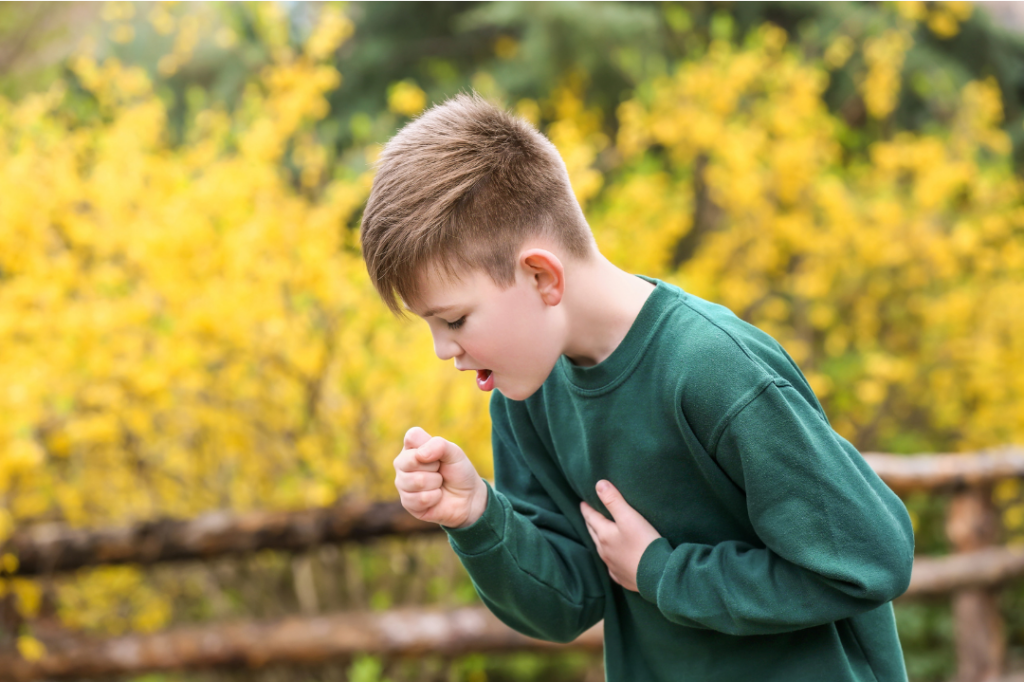Breathe Better: Managing Exercise-Induced Bronchoconstriction (EIB) in Kids
Exercise is a significant trigger for asthma. Initially, all exercise-related breathing issues were classified as exercise-induced asthma (EIA), including temporary bronchoconstriction. EIA worsens existing asthma. Later, the term exercise-induced bronchoconstriction (EIB) was introduced to differentiate patients without a history of asthma, who experience bronchospasm only during exercise. This distinction is essential for proper treatment.
What is EIB?
EIB occurs when the airways narrow after exercise, causing symptoms like shortness of breath, wheezing, coughing, decreased endurance, and chest tightness. Symptoms typically start within 2-5 minutes after exercise, peak at 10 minutes, and resolve in about 60 minutes.
EIB in Children and Athletes
EIB is common, especially in children and athletes. The prevalence is higher in children under 16 years old due to factors like ethnicity, urban-rural, and socioeconomic differences. EIB is more frequent in severe and uncontrolled asthmatic patients. It is common in athletes, children, individuals with rhinitis, and after respiratory infections.
Atopy, an allergic hypersensitivity, significantly raises the risk of EIB in children. Many children with EIB also have allergic rhinitis, and some may develop asthma later. EIB is common in asthmatic kids, especially those with severe asthma. The severity of asthma determines the likelihood of experiencing exercise-induced wheezing, with severe asthmatic patients having a much higher risk compared to those with intermittent asthma.

Identifying the Risk Factors for EIB
- Around 20–40% of children with rhinitis have EIB, especially those with untreated symptoms.
- Children with EIB are more likely to have atopic dermatitis and allergies to Dermatophagoides pteronyssinus and Dermatophagoides farinae.
- The temperature and relative humidity on the exercise test day significantly affect the likelihood of EIB.
- There is a clear association between EIB and sensitivity to indoor allergens.
Understanding How Exercise Triggers Breathing Problems
During intense exercise, you breathe in more cold, dry air, which can harm your airways, causing tissue damage, inflammation, and nerve cell activation. Breathing through your mouth during exercise releases certain chemicals that tighten the smooth muscles around the airways and affect the blood vessels. Cooling the airways activates some receptors, leading to increased muscle tone and more mucus production, reducing the ability to clear mucus. After exercise, the blood volume increases quickly, causing swelling and damage to the airway lining, leading to EIB. Athletes have higher levels of certain substances in their saliva that can activate cells of the immune system, leading to inflammation. These substances also cause other immune cells to gather around the airways.
Identifying EIB
To diagnose EIB, doctors measure how well you breathe before and after exercise using tests like peak expiratory flow (PEF) or forced expiratory volume in 1 second (FEV1). They may also use special methods, such as breathing in dry air quickly or using osmotic agents like hypertonic saline or mannitol, to see if you might have EIB.
Eucapnic Voluntary Hyperpnoea (EVH) is the gold standard for athletes. EVH is a bronchial challenge test for identifying airway sensitivity to assist in the diagnosis of exercise-induced bronchoconstriction. The challenge involves hyperventilating a dry gas mixture for 6 minutes.
The exercise challenge test (ECT) is usually performed on a treadmill or with free running. A positive test is when there’s a drop in post-exercise breathing capacity of 10% or more compared to normal. Bronchoconstriction typically begins right after exercise, peaks after 5–8 minutes, and goes away within 60 minutes.
Management of EIB
Treating EIB in both athlete and non-athlete children should include avoiding triggers, addressing any other medical conditions, and focusing on preventing and treating asthma. Inhaled short-acting beta-agonists (SABAs) can be used before competitions and to reduce symptoms. If SABA is not effective, mast-cell stabilizing agents, such as cromolyn or nedocromil, may be indicated.
Sport is Safe for Children with EIB
Regular physical activity is safe for children with EIB because it reduces lung inflammation, makes the airways less sensitive, and lowers the need for corticosteroids.
Ensuring Exercise Safety for Kids with EIB
In conclusion, EIB is common in children and should be recognized and properly treated with both non-pharmacological and pharmacological measures. Medications like SABA, mast cell stabilizers, and ICS are effective in controlling symptoms. Optimal asthma control reduces the frequency and intensity of EIB. Allergic diseases should be treated as they can worsen EIB. EIB in athletes requires an individualized approach.
If your child experiences symptoms of EIB or you have concerns about their respiratory health, schedule an appointment to check with our doctors. Early evaluation and guidance can help ensure a safe and enjoyable experience for your child during physical activities.
